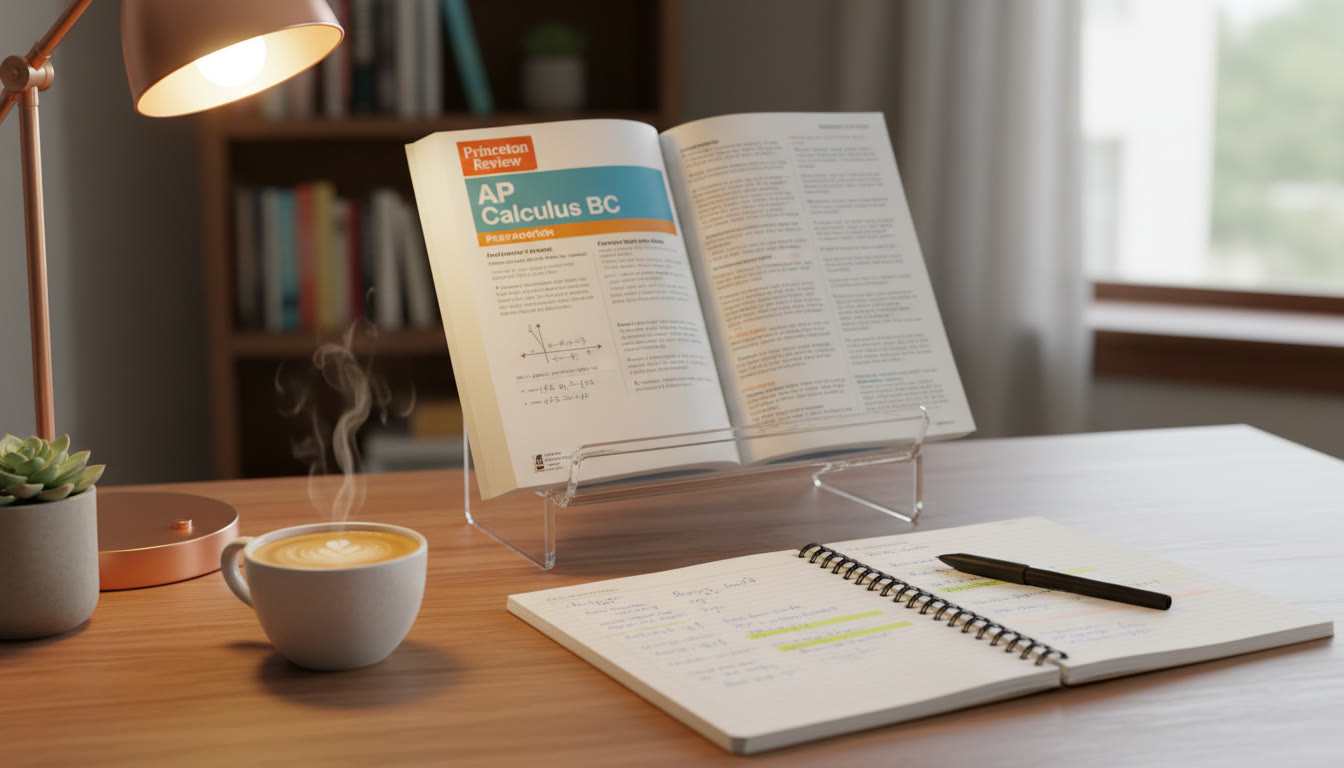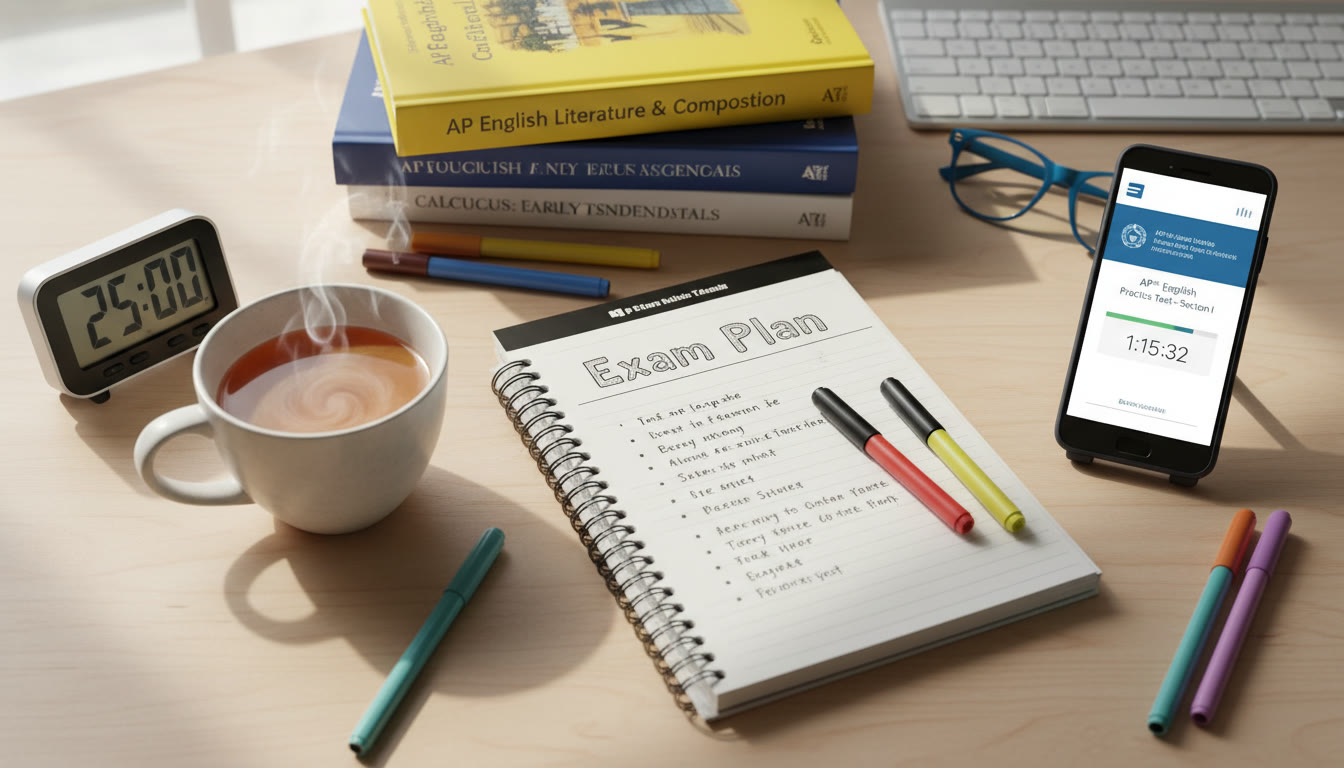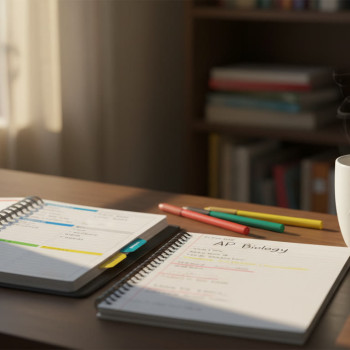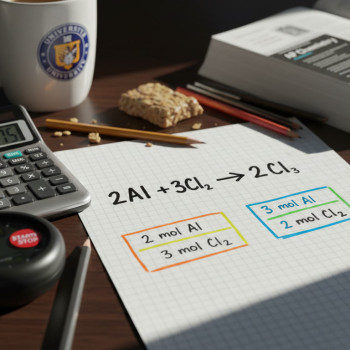Why Caffeine Strategy Matters for AP Students
If you’re prepping for AP exams or juggling a stack of units, caffeine becomes more than a beverage — it’s a study tool. But like any tool, it has an ideal use-case and some important caveats. A thoughtful caffeine strategy can sharpen focus, improve reaction time on multiple-choice sections, and help power late-night review sessions without wrecking your sleep cycle. A careless one can leave you jittery, dehydrated, and foggy. This guide walks you through practical, evidence-informed advice on dose, timing, and alternatives so you can use caffeine as an advantage, not a problem.

Understanding How Caffeine Works — The Basics
Caffeine is a stimulant that blocks adenosine receptors in the brain. Adenosine builds up while you’re awake and tells your brain it’s time to wind down; caffeine temporarily prevents that signal, making you feel more alert. It also increases dopamine and norepinephrine activity, which can enhance attention and mood for short periods.
For students, that means caffeine can help with concentration during a timed section, sustain attention while reading dense passages, or sharpen recall during a study sprint. But its effects depend on dose, individual sensitivity, tolerance, and when you take it.
Key Takeaway
- Caffeine gives a temporary boost in alertness and reaction time.
- Individual responses vary; what’s energizing for one student might be jitter-inducing for another.
- Tolerance builds quickly — frequent high doses will blunt future benefits.
How Much Caffeine Is Appropriate? Dose Guidance for Students
There’s no one-size-fits-all dose, but practical ranges help. Many adults find 40–100 mg acts as a mild lift (about half a cup to a single shot of espresso), 100–200 mg is a common single dose for noticeable alertness, and 200–400 mg is approaching the upper limit where side effects become more likely. For high school students, conservative dosing is wiser.
Practical Dose Ranges
- Light boost: 40–80 mg — good for a short study session or morning class.
- Moderate focus: 80–150 mg — effective for a longer study block or an afternoon review.
- Strong stimulant: 150–300 mg — should be used rarely and with awareness of side effects.
Remember: tolerance and body weight play roles. If you rarely consume caffeine, a lower dose will feel stronger. If you’re a regular coffee drinker, you may need more for the same effect — which is why rotating dose and occasional caffeine-free days can preserve sensitivity.
Timing Is Everything: When to Take Caffeine for Study and Exam Days
Timing determines whether caffeine helps or hurts. For study sessions, you want the peak effect aligned with the most demanding portion. For exam day, you want alertness for the test duration without a crash.
General Timing Rules
- Onset: caffeine begins to work within 15–45 minutes after ingestion.
- Peak: blood concentration typically peaks around 30–90 minutes.
- Duration: noticeable effects last 3–5 hours, and half-life ranges 4–6 hours (meaning caffeine lingers longer for some people).
Study Session Timing
For a focused two-hour study block, consume caffeine about 20–45 minutes before you begin. If you plan multiple sessions, avoid re-dosing too frequently — spaced doses every 4–6 hours limit cumulative side effects.
Exam-Day Timing
- Take caffeine about 45–60 minutes before test start so you’re at or near peak during the early sections. For longer exams, a small top-up at the half-point may help, but only if you know how your body reacts.
- Avoid large doses late in the day to prevent sleep disruption. If your exam is in the afternoon, a morning dose is usually sufficient.
- Practice your timing in mock tests so you know how your focus curve looks with caffeine.
Common Mistakes and How to Avoid Them
Many students over-rely on caffeine as a replacement for sleep or proper planning. That’s a short-term fix and a long-term trap.
Mistake 1: Using Caffeine to Replace Sleep
Caffeine can mask tiredness but won’t produce the restorative effects of sleep. Chronic sleep restriction impairs memory consolidation and problem-solving — crucial for AP exams. Use caffeine to enhance alertness when needed, but make sleep the priority.
Mistake 2: Late-Day Dosing
Consuming caffeine late in the afternoon or evening can disrupt sleep and worsen next-day performance. If you’re sensitive, set a cutoff (for many, 2–6 pm is risky; for others, even earlier).
Mistake 3: High Doses Without Practice
Taking a big dose on exam day without prior testing is risky. Practice your caffeine routine during practice exams and study blocks so you know whether a dose helps or hinders performance.
Healthy Alternatives and Complements to Caffeine
Caffeine isn’t the only way to stay alert. Using a combination of strategies reduces reliance on stimulants and builds sustainable performance habits.
Non-Caffeinated Strategies
- Short naps (10–30 minutes): Power naps can restore alertness and improve memory without interfering much with nighttime sleep if timed early enough.
- Movement breaks: A brisk 5–10 minute walk or quick bodyweight routine raises heart rate and improves circulation—simple and immediate.
- Hydration and protein-rich snacks: Dehydration and low blood sugar reduce focus. Water, nuts, or Greek yogurt make subtle but important differences.
- Light exposure: Natural light in the morning helps regulate circadian rhythm and boosts daytime alertness.
Herbal and Functional Alternatives
If you want lower-stim options, consider:
- L-Theanine with low-dose caffeine: many students report smoother focus and reduced jitter when they combine L-theanine (an amino acid in tea) with caffeine.
- Matcha or green tea: provides modest caffeine plus L-theanine for a calmer focus.
- Ginseng or adaptogens: some people find these support stress resilience, though effects vary and are subtler than caffeine.
Practical Routines for AP Study Seasons
Below are sample routines you can adapt based on sensitivity and schedule. The point is consistency: practice these during low-stakes study so exam day is predictable.
Routine A — Morning-Test Day
- 6:30 AM — Wake with water and a light protein-rich breakfast.
- 7:00 AM — Small caffeine dose (80–120 mg) with matcha or coffee.
- 7:30 AM — Quick review of key formulas or flashcards (30–45 minutes).
- Start test — you’re near peak alertness for early sections; avoid re-dosing unless you practiced it.
Routine B — Late Afternoon Study Block
- 3:00 PM — Movement break and hydration.
- 3:15 PM — Moderate caffeine dose (50–100 mg) if needed.
- 3:30–5:30 PM — Focused study; schedule a 5–10 minute walk midway.
- Evening — avoid caffeine after 6 PM to preserve sleep quality.
How to Track and Personalize Your Caffeine Plan
Personalization makes the difference. Small experiments over a few weeks will show what dose and timing best fit your body and schedule.
Simple Tracking Table
| Date | Time | Type & Dose | Task | Focus Score (1–10) | Side Effects |
|---|---|---|---|---|---|
| 2025-03-10 | 7:30 AM | Espresso 80 mg | Practice Exam – Math | 8 | Slight jitter |
| 2025-03-12 | 3:15 PM | Green Tea 50 mg | Timed Passage Practice – English | 7 | None |
Use this or a simple notes app to record reactions. After a couple of weeks, patterns emerge: times when caffeine helps, doses that are too much, and whether naps or snacks work better.
Special Considerations: Health, Medication, and Sensitivity
Caffeine affects everyone differently. If you’re on medication, have anxiety, a heart condition, or are pregnant, check with a healthcare provider before changing caffeine habits. High anxiety or panic disorder can worsen with stimulants. If you notice trembling, heart palpitations, or severe sleep disruption after small doses, reduce intake and consult a professional.
Tolerance and Cycling
Regular high intake builds tolerance quickly. To preserve benefits, consider cycles: a few days of lower intake or caffeine-free mornings each week reduce tolerance and let moderate doses remain effective when you need them most (like during exams).
Putting It All Together: A Student Case Study
Meet Maya, an AP Chemistry and AP English student who struggles with afternoon fatigue. She used to reach for two large coffees daily and found herself wired at night and foggy the next day. Maya switched to a plan:
- Swapped her second large coffee for green tea (lower dose, steady energy).
- Implemented a 20-minute mid-afternoon walk.
- Saved a single small coffee shot (100 mg) for practice exams and the morning of the real exam.
- Tracked focus scores for two weeks and found her afternoon productivity improved without sleep loss.
Small, consistent changes helped Maya keep sharp for timed sections and avoid the crash-and-binge cycle that had drained her during past test seasons.
How Personalized Tutoring (and Tools) Can Help
Managing caffeine is about aligning biology with study strategy. Personalized tutoring, like Sparkl’s one-on-one guidance, can help you plan timed study sessions where caffeine is used strategically, tailor study plans around your natural rhythms, and provide expert tutors who coach you through practice exams — including testing your caffeine routine before the real day. Sparkl’s tailored plans and AI-driven insights can pinpoint when you’re most alert, help plan study blocks to match those windows, and suggest specific intake strategies that complement your learning plan.
Exam-Day Checklist: Caffeine Edition
- Practice your caffeine routine during at least one full-length mock exam.
- Consume the practiced dose 30–60 minutes before test start.
- Bring a low-risk top-up only if you routinely use one; otherwise avoid re-dosing mid-test.
- Pair caffeine with hydration and a light snack for steady energy.
- Stick to known foods and doses to avoid surprises.
Final Tips and Quick Rules of Thumb
- Start small. Lower doses usually yield a cleaner, less jittery focus.
- Practice before the real exam. Don’t experiment on test day.
- Use caffeine strategically — to sharpen a focused session or counter predictable dips, not to replace sleep or planning.
- Combine caffeine with non-stimulant strategies: naps, hydration, movement, and structured breaks.
- Consider occasional caffeine-free days to reset tolerance.
- If you have health concerns or take medication, consult a clinician before changing intake.

Closing Thought
Caffeine is a powerful ally when used with awareness: modest doses, smart timing, and consistent practice can improve focus and exam performance. The real secret is personalization — test routines under low-stakes conditions, track how your body responds, and build a plan that fits your schedule and health. If you want extra help building a study and caffeine routine that suits your biology and the AP calendar, working with a tutor or a tailored program like Sparkl can make the process smoother and more effective. Approach caffeine as one tool in a broader toolbox — combined with sleep, planning, and practice, it can help you show up at your best on test day.





















No Comments
Leave a comment Cancel